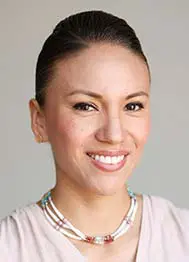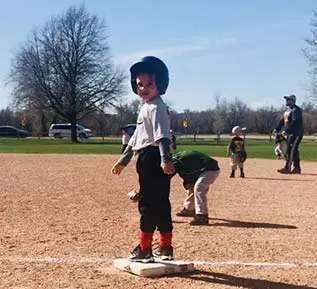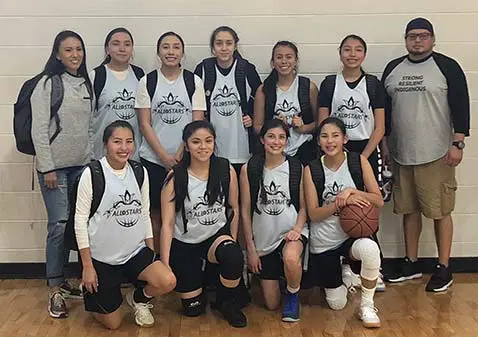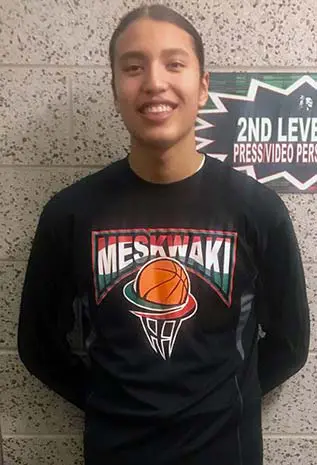RISE PERSPECTIVE
May 1, 2018
Diversify Collegiate Athletics Through Native American Communities
By Tanksi Clairmont

Throughout my adolescent years I was a competitive athlete in basketball and cross country and a track and field state finisher.
I aspired to be a collegiate athlete, and I was told I had the talent and potential to be one. Yet, the praise I received from family, teachers, peers and coaches wasn't enough for me to believe that I, as a Native American youth, had a place in collegiate athletics.
Not only was there a lack of Native American representation at the highest levels of sport, there was also a lack of knowledge and opportunities for Native American youth to be exposed to collegiate athletics. We are told as kids to dream big, but it wasn't as easy to do when people who look like you aren't represented in your dream. I, like many other past and present talented Native American athletes, didn't realize the goal of playing at the highest level.
That's why it has become a passion of mine to conduct research that can transform the narrative from lack of exposure and opportunities in sports to seeing a surplus of Native American athletes in the highest levels of sport.

The disparity in sports participation at the college level is clear: According to the NCAA, nearly 500,000 student-athletes are competing in 24 sports across three divisions. The most-recent census data says that the total Native American population in the United States is about 2.9 million, or 0.09% of the total population. Furthermore, the percentage of Native Americans enrolled in higher education is around 1%. Even more staggering is the data retrieved from the NCAA student-athlete demographic database that showed the percentage of Native American student-athletes competing in all three NCAA divisions in 2016 was a discouraging 0.005%.
The data tells a story that has been felt in Native American communities for decades – Native Americans don't play at the highest levels of sports at the same rates as other athletes of color. For the past 20 years, I have imagined a perfect NCAA landscape composed of student-athletes of all colors and ethnicities showcasing their talent at the highest level, while still maintaining a connection to their communities by sharing their stories of inspiration, hope and success.
Native American communities produce some of the most talented athletes in North America, but they often are overlooked and under considered because of geography, lack of access, opportunities and exposure to competitive play, and, most importantly, but less stated, being misunderstood as tribal people. Over the years, I've attempted to explain who I was as a Native American woman, student and everyday person, as well as who I was as a Native American athlete. My best attempt to articulate who and what a Native American athlete is:
A Native American athlete is rich in family, values, culture, language and tradition, talent and intellect, as well as sportsmanship, etiquette, prayerfulness and compassion toward competition. Native American athletes are informed and equipped with informal and formal western education and sports philosophy but often lack access to opportunities in sports and education because of inequitable resources.
Native American student-athletes continue to be underrepresented and unrecognized as a recruiting prospect in intercollegiate athletics and professional sports. Although many organizations and advocates have focused their efforts on underserved youth sports opportunities and access, gaps continue in collaboration, cooperation and communication between underserved communities and sports leaders.

Sports leaders and athletes have a responsibility to the future of race relations, leadership development, inclusivity, social justice issues and equity in all diverse populations through outreach and engagement in meaningful interactions.
In 2012, I graduated with a master of education degree in kinesiology-sport management from the University of Minnesota, where I focused a majority of my research on socio-cultural challenges and opportunities in sports, specifically in Native American communities and lives. Throughout my graduate program, I made it a point to highlight and provide perspectives and resolutions to an array of issues specific to what Native Americans face on and off the reservation, unspoken and ignored stereotypes by mainstream society and Native American historical contributions to sports, as well as how the landscape of intercollegiate athletics could look with more Native American student-athlete representation.
Specific research on Native Americans in sports is very limited; however, as a researcher with “lived experiences" in sports, I attempted to make informed presumptions and judgments based on themes, cultural norms and viewpoints supported by qualitative and quantitative data collected through Native American athletes and non-Native American collegiate coaches and athletes. Over the course of my graduate education, I compiled large amounts of literature, research and data that told a story of why mainstream sports needs diverse representation, particularly from Native American communities who have fought, died and persevered through the most unfathomable circumstances and atrocities, yet as a people are stronger, talented and motivated to become recognized in every arena, especially across sport arenas.

It's one thing to love and live sports, but it's another to be informed and aware of the real impact sports can have on an athlete, their family and community. Sports brings young and old, minority and non-minority, rich and poor, beginner and expert, rural and urban, able-bodied and physically diverse athletes and communities together to compete and challenge one another. Sports participation across diverse communities, demographics and populations has the power to change social narratives, social constructs and social justice issues faced by underserved and underrepresented people across the world.
Sports has the power to:
- Deepen insights and awareness of cultural and historical contributions.
- Discover the strengths and perseverance of underserved and underrepresented communities.
- Develop a new generation of leaders and innovators in sports sciences and social science.
One day soon I hope to develop a culturally relevant, socially responsive leadership program that will empower diverse athletes, particularly Native American athletes, to push harder and reach higher toward their educational and athletic goals while unharnessing the talent and pride within their respective communities. Successful athletes serve as a catalyst of hope and inspiration to their communities, while also changing the discourse on race, equity and education.

I am now a mother of three children, ages 17, 14 and 5. All three play a wide range of sports year-round. My two oldest play competitive club/AAU basketball and lacrosse. Both are highly talented, coachable and motivated to play sports at the highest level, but, more importantly, are high-achieving students. As their mother, and a once highly skilled athlete, I am blessed with the opportunity to support and encourage them through the process to becoming collegiate athletes.
Being an athlete from an early age sets the precedent for a healthy active lifestyle, mental and emotional discipline, teamwork and accountability, and competitive drive. These characteristics, coupled with Native American principles, beliefs and values, are beneficial to individual athletes, coaches, teams, schools, communities and sports to learn and gain from a population with so much pride and history.
Tanksi Clairmont is an enrolled tribal member of the Sisseton-Wahpeton Oyate (Dakota) from Sisseton, South Dakota, and the Sicangu Lakota Oyate from Rosebud, South Dakota; both tribal affiliations are from the Great Sioux Nation. She was born and raised in Denver, where she attended and played sports in K-12 public schools. Tanksi earned a bachelor's degree from Metropolitan State University of Denver and a master of education degree in kinesiology from the University of Minnesota-Twin Cities. She is deeply rooted in Lakota culture through ceremony, language and social dancing (powwow). Clairmont works for the National Conference of State Legislatures as the tribal working groups coordinator.





Our
Partners
Stay
In Touch
Follow us on social media.